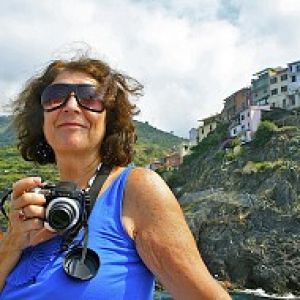Prizren, Kosovo
We set off on the bus at 9am for the half hour drive to Decani Monastery, a UNESCO world heritage site, established in 1327 by the Serb king Stefan Decanaski. It’s placed in a beautiful setting among trees and fields tended by the monks and local volunteers. The young man who showed us round stayed there 3 months every year to help out but has decided monastic life won’t be for him. The interior had many stunning frescoes - over 400.
Next we drove to the small town of Junik, where we visited the kulla. These fortress-like structures were built to protect families in blood feuds. In some villages every family would have one. These are unique symbols of Albanian architectural heritage and were singled out during the 1999 war as targets for destruction. The kulla we saw is now the town library and the chap who showed us round spoke an Albanian dialect which Tedi translated loosely. He said it was difficult to forgive the Serbian atrocities but young people would have to make up their own minds. I doubt that the enormous book he showed us of details of Serbian atrocities since the 19th century will help reconciliation.
We drove on towards Prizren, stopping for lunch (bread and salad!) at a pretty restaurant beside a gorge. We sat in semi-shade as it was hot and sunny for the first time. I enjoyed watching a toddler wanting to climb up a little plastic slide. The mother lifted her up and sat her at the top to slide down but she screamed. She toddled back to the bottom of the slide and tried again to climb and again was removed and put at the top. More screaming. Then dad came to sort it out. Same result. The poor wee one just wanted to try to climb up and wasn’t interested in the steps or being put at the top and guided down. Shame she didn’t have a granny there !
We reached our hotel Centrum up a narrow street in Prizren. We have another tiny room but the beds are comfy. There are a lot of printed rules eg “no use of both beds otherwise you’ll be fully charged” or “Don’t slam doors is allowed” or “no gambling or any unlawful behaviour is permitted”. I also “ resisted billing articles on the walls”.
We had a wander to Our Lady of Ljeviš, 14th-century Serbian Orthodox Church, part of UNESCO since 2006. We had to relinquish our passports to an armed man in uniform before entering. There we found Steve, who is extremely knowledgeable about frescoes, and Robert who helps a church religious charity monitoring the home office in their process of granting refugee status. A young Serbian priest offered to show me the most interesting frescoes, one of which was unusual because it showed the infant Jesus with his hand in a basket held by Mary which shows he offered to feed people both physically and spiritually. He said the deep gauges in some of the lower frescoes had been done at the beginning of the 400 year Ottoman period when the church was converted to a mosque. The holes were needed so they could plaster over the Orthodox symbols. All the black walls had happened when Albanian terrorists had set fire to the church in 2004. (The Serbs don’t recognise Kosovo as a country so call the Muslims here Albanians which they might have been centuries ago).
While walking by the river in bright sun, I had an ocular disturbance so we had to go back to the hotel for me to let it pass before venturing out again to see the Church of St George. (About 20% of the population of Kosovo is Serb). This too had been burned in 2004 but since reconstructed. We only had to show our passports and got in, provided we were not carrying firearms. We walked around a bit, hoping to find a coffee and baclava stop but it was getting chilly so instead we went to the large mosque. We were allowed in despite me not having my scarf and therefore, according to the sign outside “naked”.
The history of this area is so complex and fascinating but I doubt we’ll get the full picture while here.
- 38
- 0

Comments
Sign in or get an account to comment.


